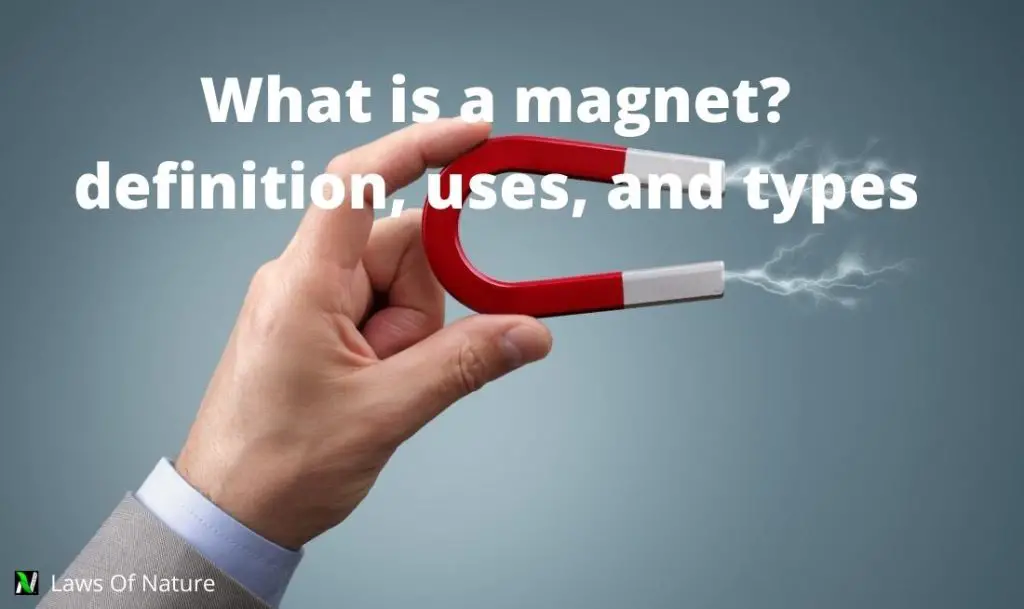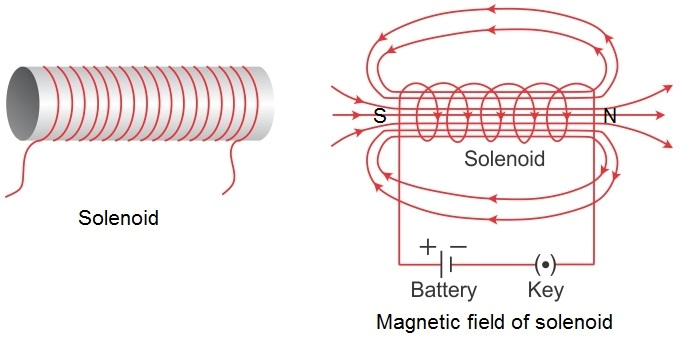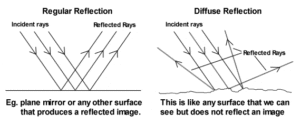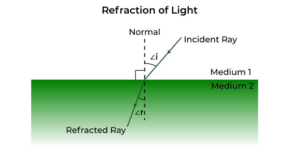In this article, we are going to discuss magnets, their definition, properties, uses, and types. So let’s get started…

What is a magnet?
| Definition: A magnet is a material or object that is capable of producing a magnetic field. |
This magnetic field is invisible, but it is responsible for the most remarkable property of a magnet. The magnetic force can attract other ferromagnetic materials like iron, steel, nickel, cobalt, etc., and can also attract or repel other magnets. Like poles of two magnets repel each other whereas unlike poles attract each other.
Properties of a magnet
Some basic properties of magnets are given below:
- When fine iron filings is to be sprinkled around a magnet, then it is observed that the iron filings cling to the end of the magnet as the attraction is maximum at the ends of the magnet. These ends are known as poles of the magnets.
- Magnetic poles always exist in pairs, so magnetic monopoles didn’t exist.
- Whenever we suspend a magnet freely in air, then we will find that it is always points towards north-south direction. The pole pointing towards geographic north is known as the North Pole and the pole pointing towards geographic south is known as the South Pole. [latexpage]
- Like poles repel each other while unlike poles attract each other.
- The force of attraction/repulsion between two magnets is inversely proportional to the square of the distance between them. Therefore, lesser distance larger force, longer distance lesser force. $$F\propto \frac{1}{r^2}$$
Types of magnets
There are basically three types of magnets, and they are as given below:
- Permanent magnet
- Temporary magnet
- Electromagnets
Permanent magnet
| A permanent magnet is a magnet that is made up of a magnetized material and creates its own persistent magnetic field. |
Permanent magnets are commonly used types of magnets. They are called permanent magnets because they do not lose their magnetic property once they are magnetized.
The materials that can be magnetized are ferromagnetic (or ferrimagnetic material), they are magnetizable materials that are also strongly attracted by a magnet, including the elements iron, nickel, and cobalt and their alloys, some rare earth metal alloys, and some naturally occurring minerals like a magnetic stone lodestone.
Although ferromagnetic (and ferrimagnetic) materials are the only material that is attracted towards a magnet strongly enough that it to be considered commonly magnetic, apart from this all other substances respond weakly to a magnetic field, which is one of the several other types of magnetism.
Ways of magnetizing a ferromagnetic material
A magnetized ferromagnetic material or permanent magnets can be de-magnetized in the following ways.
- Heat the material above its Curie temperature, allow it to cool in a magnetic field, and hammer it while it cools. This is the most effective method and is similar to the industrial processes used to make permanent magnets.
- Electric current: The magnetic field created by passing an electric current through a coil can cause the domains to line up. Once all domains are aligned, increasing the current will not increase the magnetization.
- Method of Stroking: An existing magnet is moved from one end of the object to the other repeatedly in the same direction (one-touch method) or two magnets are moved out of center by a third (double-touch method).

Ways of de-magnetizing a ferromagnetic material
A magnetized ferromagnetic material or permanent magnets can be de-magnetized in the following ways.
- Heating a magnet past its Curie temperature: The molecular movement destroys the alignment of the magnetic domains. This constantly eliminates all magnetization.
- Exposure to the reverse field: Demagnetization, or reverse magnetization, occurs when any part of the magnet is exposed to a reverse field above the coercive force of the magnetic material.
- Hammering: Mechanical disturbances tend to randomly distribute magnetic domains and reduce the magnetization of an object, but can cause unacceptable damage.
Types of permanent magnet
Some types of permanent magnets are given below:
- Magnetic metallic elements: such as iron ore (magnetite or lodestone), cobalt and nickel, as well as the rare earth metals gadolinium and dysprosium (when at a very low temperature).
- Composites
- Rare earth magnets: such as samarium–cobalt and neodymium–iron–boron (NIB) magnets.
- Single-molecule magnets (SMMs) and single-chain magnets (SCMs)
- Nano-structured magnets
Temporary magnets
Temporary magnets are those magnets that can be magnetized in the presence of a magnetic field. But when the magnetic field is removed, these materials lose their magnetic property and become de-magnetized. Iron nails, screws, the tip of the screwdriver, and paper clips are examples of temporary magnets.
Electromagnets
An electromagnet, in its simple design, is just a wire that has been wound into one or more loops, known as a solenoid. When electrical current flows through the wire, a magnetic field is created that is concentrated near (and especially within) the coil. and magnetic field lines are very similar to those of a magnet. The orientation of this effective magnet is determined by the right-hand rule. The magnetic moment and magnetic field of the electromagnet are proportional to the number of turns of wire, the cross-section area of each loop, and the current flowing through the wire.

When the wire is wound around a material with no particular magnetic properties (e.g. plastic), it tends to generate a very weak field; However, when it is wrapped around a soft ferromagnetic material such as an iron core, the net magnetic field generated can increase the field strength by several hundred to one thousandfold.
Uses of electromagnets
- Particle accelerators
- Electric motors
- Junkyard cranes
- Magnetic resonance imaging machines
Uses of magnets
Some uses of magnets are given below:
- Magnets are used seperate magnetic material from the garbage.
- It is used to construct magnetic needle and marine compasses.
- Electromagnets are used in ring bells in school colleges.
- Permanent magnets are used in particles accelerators, electric motors and generators.
- Magnets are used in speakers and many electronic devices.
- Electromagnets are used in magnetic resonance imaging system in hospitals.








